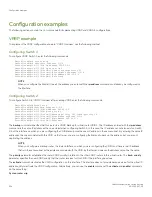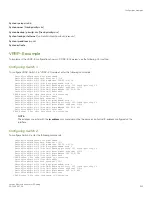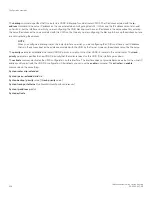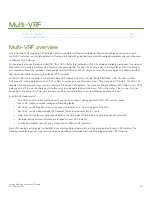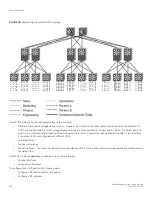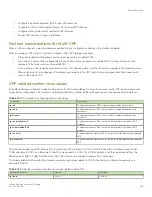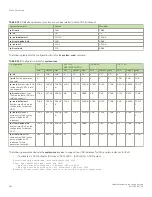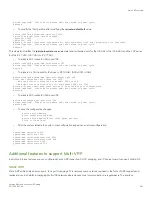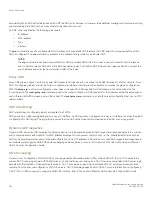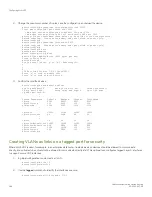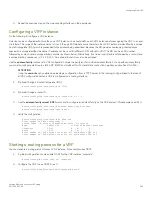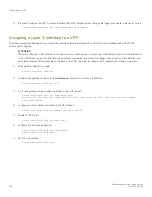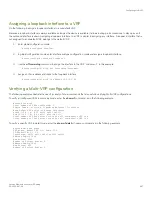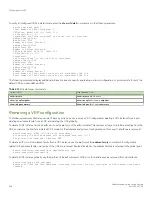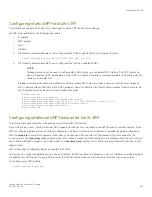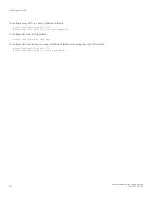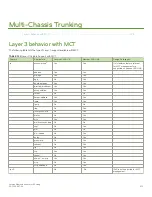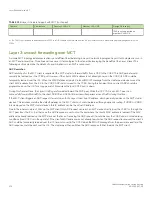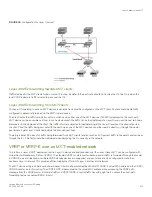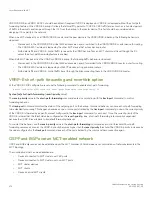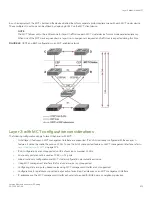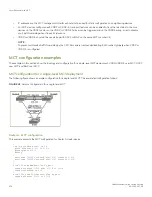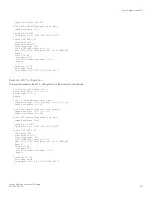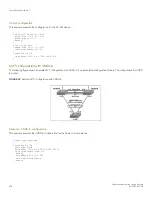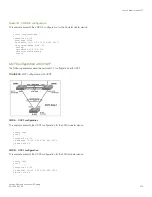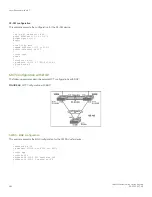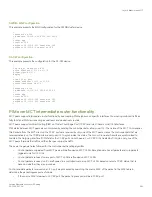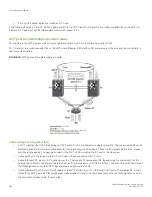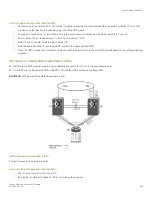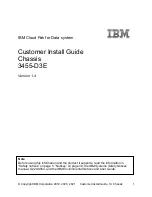
To verify all configured VRFs in detail mode, enter the
show vrf detail
command, as in the following example.
device# show vrf detail
Total number of VRFs configured: 2
VRF green, default RD 1:1, Table ID 1
IP Router-Id: 1.1.1.1
Interfaces: Use "show vrf green" to see the list of interfaces
Address Family IPv4
Max Routes: 5500
Number of Unicast Routes: 6
Address Family IPv6
Max Routes: 400
Number of Unicast Routes: 6
VRF red, default RD 10:12, Table ID 2
IP Router-Id: 1.1.17.1
Interfaces:
Use "show vrf red" to see the list of interfaces
Address Family IPv4
Max Routes: 300
Number of Unicast Routes: 2
Address Family IPv6
Max Routes: 70
Number of Unicast Routes: 2
Total number of IPv4 unicast route for all non-default VRF is 8
Total number of IPv6 unicast route for all non-default VRF is 8
The following commands display additional information about a specific application, protocol configuration, or protocol state for both the
default VRF and user-defined VRFs.
TABLE 113
Useful show commands
Default VRF
User-defined VRF
show ip route
show ip route vrf
vrf-name
show ip ospf neighbor
show ip ospf vrf
vrf-name
neighbor
show ip bgp summary
show ip bgp vrf
vrf-name
summary
Removing a VRF configuration
The following examples illustrate a variety of ways by which you can remove a VRF configuration: deleting a VRF instance from a port,
deleting an address family from a VRF, and deleting the VRF globally.
To delete a VRF instance from a specific port, use the
no
form of the
vrf
command. This removes all Layer 3 interface bindings from the
VRF, and returns the interface to default VRF mode. All IP addresses and protocol configuration on this Layer 3 interface are removed.
device(config-if-e1000-1/7/1)# no vrf forwarding1
All existing IP and IPv6 address will be removed from port 1/7/1
The port will be returned to default VRF
To delete an IPv4 or IPv6 address family from a VRF instance, use the
no
form of the
address-family
command. All configuration
related to the address family on all ports of the VRF are removed. Routes allocated to the address family are returned to the global pool.
device(config-vrf-customer1)# no address-family ipv4
device(config-vrf-customer1)#
To delete a VRF instance globally, use the
no
form of the
vrf
command. All IPv4 or IPv6 addresses are removed from all interfaces.
device(config)# no vrf customer1
Warning: All IPv4 and IPv6 addresses (including link-local) from all interfaces in VRF customer1 have been
removed
Configuring Multi-VRF
FastIron Ethernet Switch Layer 3 Routing
568
53-1003627-04
Summary of Contents for FastIron SX 1600
Page 2: ...FastIron Ethernet Switch Layer 3 Routing 2 53 1003627 04 ...
Page 16: ...FastIron Ethernet Switch Layer 3 Routing 16 53 1003627 04 ...
Page 20: ...FastIron Ethernet Switch Layer 3 Routing 20 53 1003627 04 ...
Page 142: ...FastIron Ethernet Switch Layer 3 Routing 142 53 1003627 04 ...
Page 150: ...FastIron Ethernet Switch Layer 3 Routing 150 53 1003627 04 ...
Page 200: ...FastIron Ethernet Switch Layer 3 Routing 200 53 1003627 04 ...
Page 214: ...FastIron Ethernet Switch Layer 3 Routing 214 53 1003627 04 ...
Page 350: ...FastIron Ethernet Switch Layer 3 Routing 350 53 1003627 04 ...
Page 476: ...FastIron Ethernet Switch Layer 3 Routing 476 53 1003627 04 ...
Page 588: ...FastIron Ethernet Switch Layer 3 Routing 588 53 1003627 04 ...

